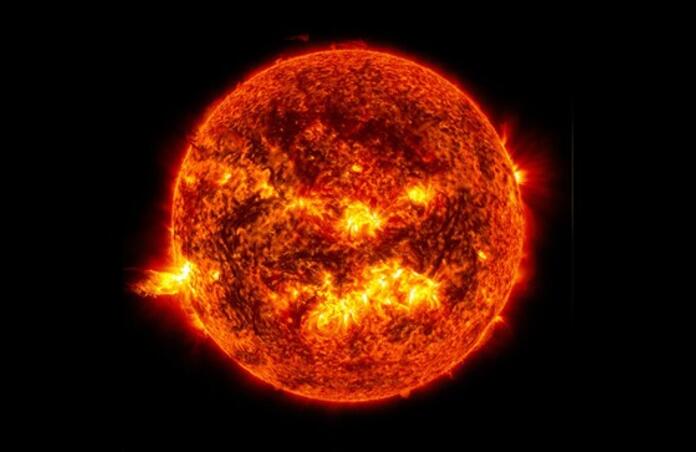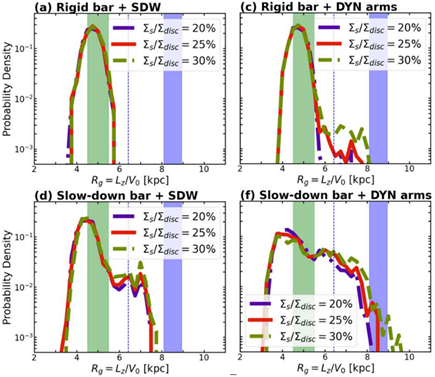The Dynamic History of our Solar System's Galactic Migration

When observing our closest neighbouring stars, astronomers quickly realised that our Sun stands out from its peers of similar age, possessing a notably greater metallicity. Stars within the Milky Way Galaxy obey a well-studied, empirical trend, displaying decreasing metallicity as we sample stars further away from the galactic centre. Higher gas densities near the nucleus drive greater star formation and more frequent supernovae, enriching the inner spiral arms with metals. This led to the conclusion that our Sun must have formed closer to the nucleus, around 5 kpc from the galactic centre, and subsequently shifted to an orbital radius of about 9 kpc. However, traditional models have struggled to replicate a migration to its present location.
The Sun would have formed within the Corotation Radius (CR), some 7 kpc of the Milky Way’s bar. This is a region within our galaxy, where the angular velocity of gas matches that of the galaxy’s spiral arms, kept in resonant motion by gravitational interactions. This produces a gravitational potential barrier at the CR, which restricts material from moving outward beyond this boundary. For the Sun to migrate to its current position, an additional source of perturbative energy would have been required.
Now, a new study led by Junichi Baba investigates the migration of the Sun, with a particular focus on understanding how it overcame the CR barrier. The team model the galaxy by placing 104 test particles within the corotation radius and embedded within a potential composed of three components: the bar, the spiral arms, and another axisymmetric potential accounting from sources such as the dark matter halo and stellar bulge. From here, the system was gradually evolved in time using a fourth order Runge-Kutta method, class of numerical models to solve systems of non-linear equations.

The study modelled the Milky Way’s Galactic dynamics using a combination of bar and spiral arm structures. A rigid bar maintained a constant pattern speed, while a slowing bar decelerated over time, expanding the CR radius outward. Spiral arms were modelled as either steady density waves with fixed speed and pitch angle, or dynamic arms, which evolved due to the Galaxy’s differential rotation. The four permutations of these scenarios were investigated to determine the most effective mechanism for outward migration.
While they found that the growing CR radius did permit some outward migration, modelling dynamic arms facilitated the necessary perturbations to overcome the CR barrier. The most effective combination involved both the slowing bar and the dynamic arms, which redistributed angular momentum efficiently, allowing particles to migrate over a wide radial range, between 3–8.5 kpc. Of the simulated test particles, around 0.8% of these ended up within the vicinity of the present-day Sun. This scenario best explains the Sun’s journey from its birth region to a stable, habitable environment.
The authors use their results to put forth the notion of galactic habitable orbits, as a replacement for the traditionally viewed galactic habitable zone. This aimed to define the habitability of a galaxy within a static ring. Their new view emphasises the evolving galactic environment that stars will experience through their lifecycles. The study discusses future works, which would include incorporating potentials from additional galactic sources, such as giant molecular clouds. Additionally, they hope that future studies could refine the habitability framework, by introducing more sophisticated models of planetary system evolution and atmospheric chemistry.
--
Journal Source: J. Baba et al, Solar System Migration Points to a Renewed Concept: Galactic Habitable Orbits, The Astrophysical Journal Letters, Vol. 976, No. 2, (2024), DOI: 10.3847/2041-8213/ad9260
Cover Image Credit: NASA/SDO
